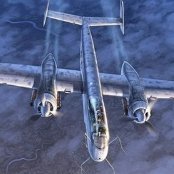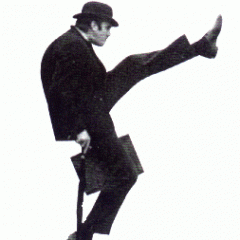-
Posts
1,819 -
Joined
-
Last visited
-
Days Won
1
bdthoresen last won the day on April 24 2013
bdthoresen had the most liked content!
About bdthoresen
- Birthday 08/27/1977
Profile Information
-
Gender
Male
-
Location
St. Augustine, FL
-
Interests
Almost anything with wings or rotors. I like them all....
Recent Profile Visitors
4,459 profile views
-
 Martinnfb reacted to a post in a topic:
"Sugar's Blues" Late War RCAF Lancaster
Martinnfb reacted to a post in a topic:
"Sugar's Blues" Late War RCAF Lancaster
-
 Anthony in NZ reacted to a post in a topic:
Grumman Widgeon
Anthony in NZ reacted to a post in a topic:
Grumman Widgeon
-
 patricksparks reacted to a post in a topic:
Grumman Widgeon
patricksparks reacted to a post in a topic:
Grumman Widgeon
-
Well, Patrick, I must say I am impressed beyond words. The Widgeon has always held a special place for me, as I used to maintain one, and helped restore/modify a second one. The first was previously restored, and had the Ranger engines removed and replaced with turbocharged Lycoming 540’s. The second was a shell that showed up, and the owner wanted the airframe completely rebuild and upgraded to the same standard. I had thousands of hours into that airplane, from reskinning and sealing the lower hull, to scratch building the hydraulic system, resealing fuel tanks, and installing the retractable floats. This airframe did have a shorter nose…….We were weeks away from finally turning the engines for ground testing, and the owner sold the airplane! I look forward to the day when I can finally build a decent kit of this airplane. Please keep the updates coming! Thor.
-
 Martinnfb reacted to a post in a topic:
F7F-3 Tigercat - BuNo 80405 - VMF 312 MCAS - El Toro, CA 1946
Martinnfb reacted to a post in a topic:
F7F-3 Tigercat - BuNo 80405 - VMF 312 MCAS - El Toro, CA 1946
-
 Out2gtcha reacted to a post in a topic:
F7F-3 Tigercat - BuNo 80405 - VMF 312 MCAS - El Toro, CA 1946
Out2gtcha reacted to a post in a topic:
F7F-3 Tigercat - BuNo 80405 - VMF 312 MCAS - El Toro, CA 1946
-
 geedubelyer reacted to a post in a topic:
F7F-3 Tigercat - BuNo 80405 - VMF 312 MCAS - El Toro, CA 1946
geedubelyer reacted to a post in a topic:
F7F-3 Tigercat - BuNo 80405 - VMF 312 MCAS - El Toro, CA 1946
-

F7F-3 Tigercat - BuNo 80405 - VMF 312 MCAS - El Toro, CA 1946
bdthoresen replied to Out2gtcha's topic in Works in Progress
Brian- so sorry about your Mom, it’s a club that we all seemingly gain membership to, but never ask to join. I lost mine just over a year ago, so I understand about losing one’s mojo. I lost all motivation for most things, and am slowly “emerging from the fog.” But things still aren’t right, and my modeling has suffered hugely. Just can’t seem to get into gear. All the best, broski. In due time…… Thor -
 Martinnfb reacted to a post in a topic:
F7F-3 Tigercat - BuNo 80405 - VMF 312 MCAS - El Toro, CA 1946
Martinnfb reacted to a post in a topic:
F7F-3 Tigercat - BuNo 80405 - VMF 312 MCAS - El Toro, CA 1946
-
 Martinnfb reacted to a post in a topic:
F7F-3 Tigercat - BuNo 80405 - VMF 312 MCAS - El Toro, CA 1946
Martinnfb reacted to a post in a topic:
F7F-3 Tigercat - BuNo 80405 - VMF 312 MCAS - El Toro, CA 1946
-
 CRAZY IVAN5 reacted to a post in a topic:
MOST WANTED RUSSIAN AIRCRAFT POLL
CRAZY IVAN5 reacted to a post in a topic:
MOST WANTED RUSSIAN AIRCRAFT POLL
-
 daHeld reacted to a post in a topic:
1/18 Fairey Firefly VX376
daHeld reacted to a post in a topic:
1/18 Fairey Firefly VX376
-

F7F-3 Tigercat - BuNo 80405 - VMF 312 MCAS - El Toro, CA 1946
bdthoresen replied to Out2gtcha's topic in Works in Progress
Brian- nice work so far. I drive a 2018 Gen 3 with the G series Lexus engine. I have owned Chevy, Ford, Dodge and Nissan pickups before, but the Tacoma beats them all hands down. I will never own anything else…… Keep the updates coming in the Tigercat. You are so close! Thor -

RAF FG.1 XV571 WILD HARE Phantom Conversion
bdthoresen replied to Anthony in NZ's topic in Works in Progress
Sorry, Anthony. I call bullsh$t on your previous statement. I check your thread all the time. I have been busy restoring the full size birds in my shop. Loving the work here dude! By the way, how is the Taylorcraft coming? Thor -
I will buy multiples of both…….without hesitation. -Thor
-
Nice work! Love the build so far! And if we are talking Swedish Melodic Death metal bands, may I suggest the following…… I have a rule about metal singers who scream. Scream all you like, but I have to understand the lyrics you are screaming. If your screams sound like two marsupials/ mammals mating, I will pass……. THOR
-

Converting HPH's 1/32 Tigercat into an F7F-3N
bdthoresen replied to Fancherello's topic in Works in Progress
Welcome back, Fanch! Looks great so far!!!! -Thor -
Dang, John that looks great. Beautiful work as always! -Thor
-
Vince- Awesome work. Loving the conversion work. The FM-2 is a great airplane. Keep up the good work. What are you going to use for an engine? Thor
-

1/32 P-51B conversion from Revell 1/32 P-51D early
bdthoresen replied to ironman1945's topic in Works in Progress
Merry Christmas Dave-O! Stunning build! Thor







